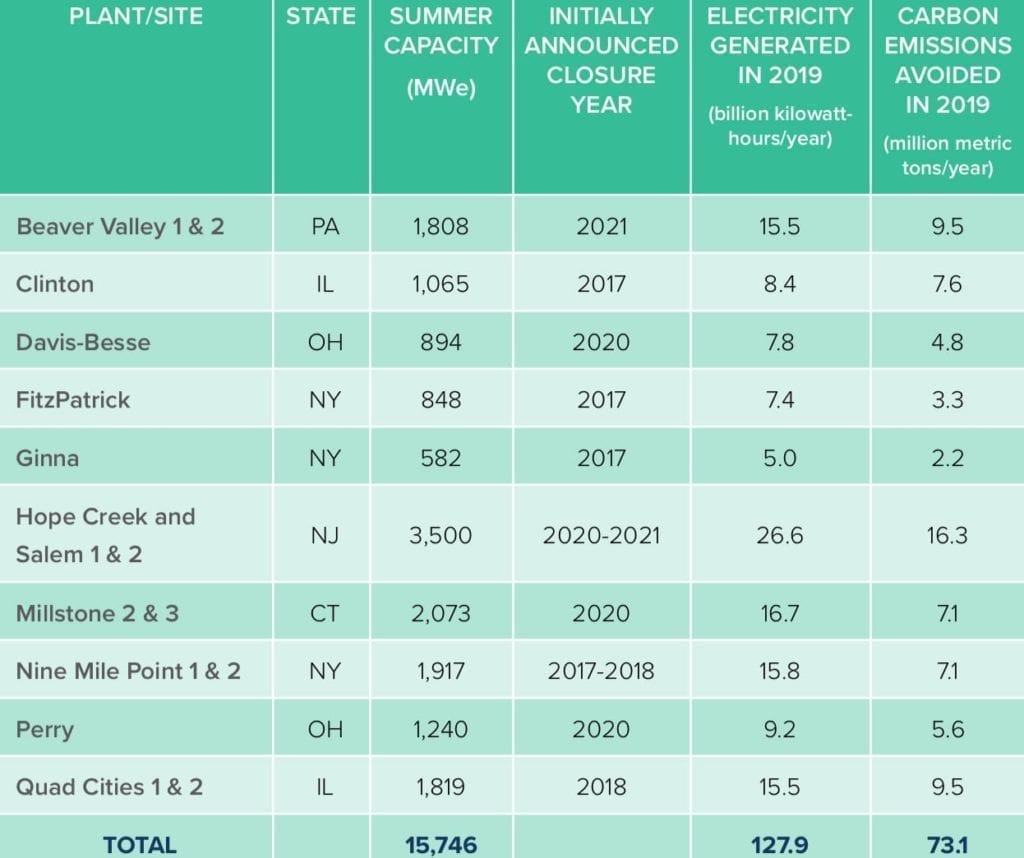U.S. Nuclear Industry Shaved Generating Costs by 7.6% Compared to 2018
The post U.S. Nuclear Industry Shaved Generating Costs by 7.6% Compared to 2018 appeared first on POWER Magazine.

The U.S. nuclear power fleet last year achieved its lowest recorded average total generating costs in two decades-$30.42/MWh-though it ran at a record-high 93.4% average capacity factor. Total generating costs were 7.6% lower last year compared to the prior year, and have fallen nearly 32% since 2012.
The numbers, highlighted in the Nuclear Energy Institute's (NEI's) Nuclear by the Numbers report released April 14, suggest industry initiatives to improve cost and performance and boost the competitiveness of nuclear power have been successful.
The nation's 96 reactors at 56 sites have a combined 98,070 MWe of baseload capacity. The fleet in 2019 produced a record 809.4 billion kWh (809.4 TWh), about 2.3 TWh more than in 2018 (and 12.2 TWh more than in 2014), the report said. Nuclear generation today represents about 54.8% of U.S. carbon-free electricity, more than all other renewables sources combined. The report notes that over the past six years, industrywide capacity factors have also stayed above 90%.
The 2019 average capacity factor 93.4% number-the highest recorded in 20 years-is significant because it means "there is more nuclear-generated electricity today from a small number of reactors," noted Harsh Desai, senior manager of NEI Energy and Economic Analysis. "For example, to have generated the same amount of electricity 30 years prior, in 1989, it would have taken 32 additional reactors compared to 2019."
Since 2013, the report notes, eight reactors-with a combined 6.7 MWe of summer capacity-have been prematurely retired, generators whose fate was determined by market conditions, political pressure, or financial stresses assailing the sector. At least six others-a combined 5.7 GW-will join them by 2025: the 601-MW Duane Arnold reactor in Iowa, which will close this year; Indian Point 2 and 3 in New York, a total 2,054 MW, which will be closed by 2021; the 772-MW Palisades reactor in Michigan, which will close in 2022; and Diablo Canyon 1 & 2, a combined 2,240 MW that will close by 2025. (For more, see this month's Big Picture infographic, "U.S. Nuclear Lifetimes.")
The nuclear industry has lobbied hard for state measures to keep nuclear plants open, and those efforts have so far paid off in five states: New York, Illinois, Connecticut, New Jersey, and Ohio. According to the NEI, state actions have "saved" 15 reactors, a combined 15.7 GW, from premature retirement.
 The Nuclear Energy Institute says 15,746 MWe of baseload capacity has been "saved" from premature closure due to state actions. Source: Nuclear by the Numbers, NEI, April 2020
The Nuclear Energy Institute says 15,746 MWe of baseload capacity has been "saved" from premature closure due to state actions. Source: Nuclear by the Numbers, NEI, April 2020At the same time, however, the industry has embarked on a concerted effort to improve bottom lines as markets are increasingly inundated with cheap gas and renewable power. Under its industrywide "Delivering the Nuclear Promise initiative," for example, the industry has set (and now achieved) an ambitious goal of a 30% reduction in total generating cost, the report said.
"Average total generating costs have decreased from $44.57 per megawatt-hour in 2012 peak to $30.42 per megawatt-hour in 2019, a reduction of nearly 32%," it noted. The $30.42/MWh figure is the lowest since 2002, noted Desai.
The NEI says that the 2019 total generating cost includes an average total operations cost of $18.55/MWh; $5.72/MWh capital cost; and $6.15/MWh in fuel cost. Units with multiple units are producing even cheaper power at an average total generating cost of $28.38/MWh, the report noted. Average costs for single unit sites, however, remain much higher at $38.40/MWh.
Of specific note is a dramatic reduction in capital costs, which have fallen nearly 10% compared to last year. Operations costs also fell substantially, by 7.8%, while fuel costs decreased about 4.9% compared to 2018.
 Source: Nuclear by the Numbers, NEI, April 2020
Source: Nuclear by the Numbers, NEI, April 2020Meanwhile, in another triumph highlighted in the NEI's report, in December 2019 the Nuclear Regulatory Commission (NRC) granted the first-ever subsequent license renewal (SLR) applications to Turkey Point 3 and 4, and then to Peach Bottom 2 and 3 in March 2020, extending these reactors' operating licenses from 60 to 80 years. More SLRs are expected this June for Surry 1 and 2. Other reactors expected to apply for SLRs include North Anna 1 and 2, and Oconee 1, 2, and 3. Eight others have publicly announced intentions for renewal: Brunswick 1 and 2; Catawba 1 and 2; H.B. Robinson; Harris; and McGuire 1 and 2.
-Sonal Patelis a POWER senior associate editor (@sonalcpatel,@POWERmagazine).
The post U.S. Nuclear Industry Shaved Generating Costs by 7.6% Compared to 2018 appeared first on POWER Magazine.